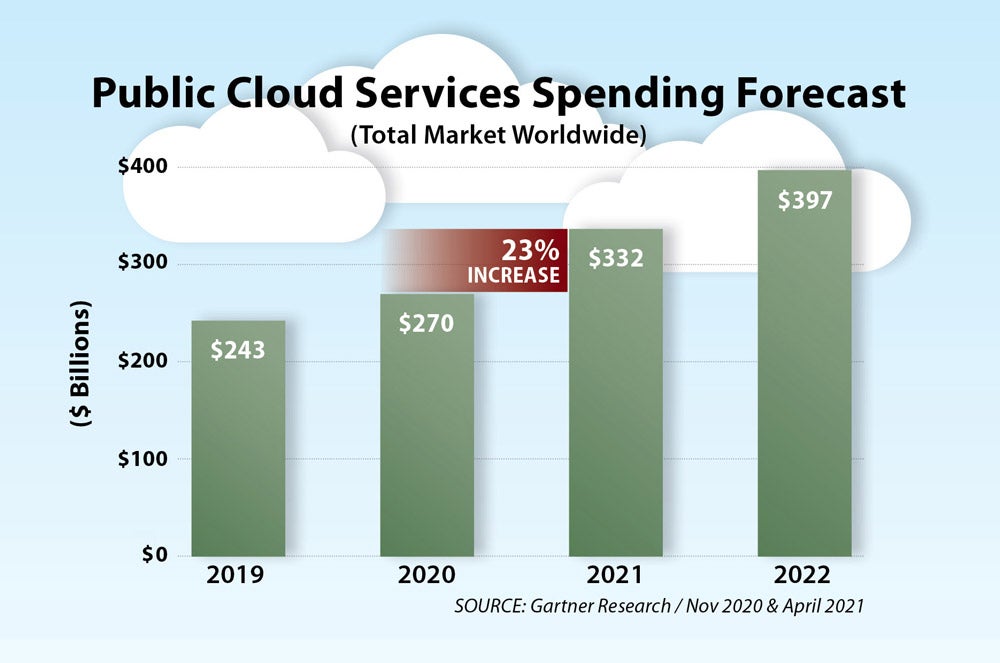
In March of this year, CIOInsight reported on a Gartner webinar that predicted IT spending would continue to grow through 2021, growing 4% over 2020 to reach $3.9 trillion by the end of the year. At the time, Gartner analyst John-David Lovelock predicted a corresponding jump in cloud spending.
Background Reading: Analysts Forecasting a Bright Future for IT Spending
Not surprisingly, Lovelock’s prediction is proving to be accurate as Gartner predicts public cloud spending to rise 23% this year, growing to $332.3 billion in 2021.
“Simply put,” said Gartner’s research vice president Sid Nag, “the pandemic served as a multiplier for CIOs’ interest in the cloud.”
Nag expects much of cloud spending’s growth to come at the expense of data center spending.
“The events of last year allowed CIOs to overcome any reluctance of moving mission critical workloads from on-premises to the cloud, […] Even absent the pandemic there would still be a loss of appetite for data centers.”
As enterprise demands for data grow, so too does spending on infrastructure, networking, security and energy. By migrating data and infrastructure to the cloud, companies shift spending to the cloud as well.
Read More: Gaining Control of Data Center Power Consumption.
The rise of the hybrid workforce is expected to drive multiple XaaS segments that will contribute to the increased cloud spend, with Infrastructure-as-a-Service and Desktop-as-a-Service (DaaS) seeing the biggest increases. These segments reflect the practical side of the public cloud in providing remote workers secure access to the tools and data they use to keep the business running.
For example, DaaS has posted steady growth over the last three years, posting a 118% gain to reach $2.6 billion through 2021. But Gartner predicts cloud computing will soon evolve from supporting end-user productivity alone.
“[Cloud computing] will further evolve from serving pedestrian use cases such as infrastructure and application migration, to those that combine cloud with technologies such as artificial intelligence, the Internet of Things, 5G and more,” Nag said.